The Lady and the Unicorn
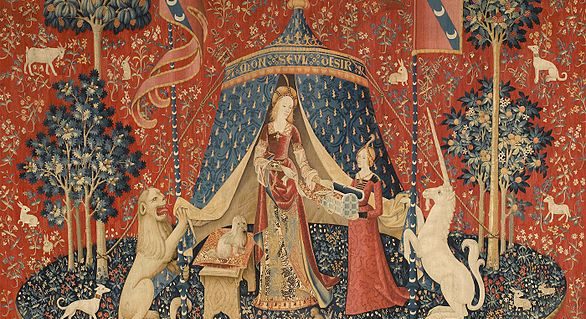
NSW Art Gallery, Sydney, April 2018
Prosper Mérimée (1803-1870), author of Carmen (1845), while Inspector-General of Historic Monuments of France, discovered these old wall rugs, c. 1500, hanging wanly at the otherwise inconsequential Chateau de Boussac, a couple of hundred kilometres south-east of Tours. Recognising their vivid design and luminous finish, he began the tortuous task of acquiring them for the State, where they were finally ensconced, safe from rats and the damp, in the Musée de Cluny in Paris.
From early February until late June, they are in Sydney where all and sundry, even The Varnished Culture who objects to the characterising of them as tapestries (in fact they are weavings, by loom, in wool yarn highlighted by silk), were dazzled by them. The detail is wonderful, arguably divine; you can see the undulating horizontal weft ambling along the vertical warp, and marvel at the technical genius of the artist, or artists (the ‘Master of Anne of Brittany’ is credited).
There are six hangings, all between 8 by 16 feet in dimension, containing an almost unique and untraceable backdrop of madder red, with beautifully detailed verdant greens and blues of millefleur gardens, and cream coloured main figures of a finely-garbed lady, and heraldic lion and unicorn, with various subordinate hues, in various tableaux suggestive of medieval allegory.
The allegorical significance can be debated at length, probably without much edification. The five senses, and the sixth, seem to feature prominently in the various scenes. The Physiologus, a work in Greek from Alexandria about 2C or 3C AD, influential to medieval sensibilities, suggests that the only way to catch a unicorn is for a pure maiden to wait at rest in the forest; it will then come and rest its bearded head in her lap. So it would appear to be a “coming of age” story, much like To Sir, With Love, Murmur of the Heart, Pretty in Pink or, indeed, Porky’s. Anyway, here are the works, with their commonly accepted titles and our brief description:
“Smell” – the floral bouquet –
“Touch” – grasping flag and horn –
“Taste” – feeding the bird –
“Hearing” – tinkering at the xylophone –
“Sight” – showing the mythical beast its reflection (not quite according to principles of refraction as Velásquez might say) –
“My sole desire” (“A mon seul désir,” – perhaps the heart, the soul, the essence beyond earthly senses – the 6th sense?) –
George Sand, who accompanied Mérimée on the mission to rescue them, and hence must take joint credit, wrote of them in her novel Jeanne (1844) – “These finely worked scenes are masterpieces and, if I am not mistaken, quite a curious page of history.” Rilke loved them too and in his prose-poem, Notebooks of Malte Laurids Brigge (1910), stated “…first of all take a step back and look at them, all together. Are they not tranquil?”
They are of a kind with this Flemish millefleur tapestry, The Triumph of Death, or the Three Fates (circa 1510–20):

Leave a comment...
While your email address is required to post a comment, it will NOT be published.


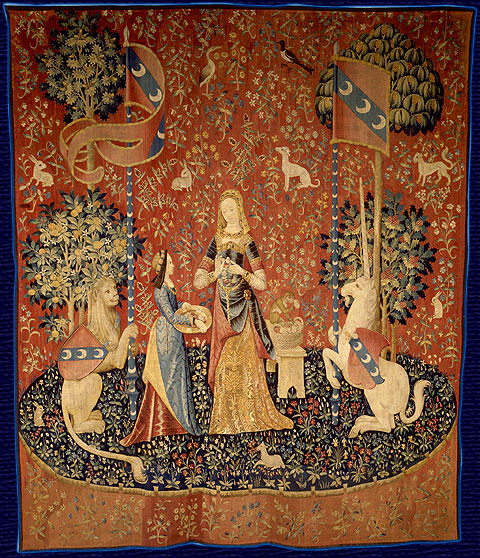
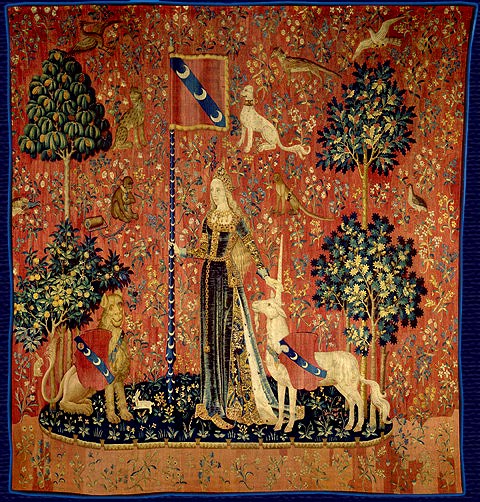
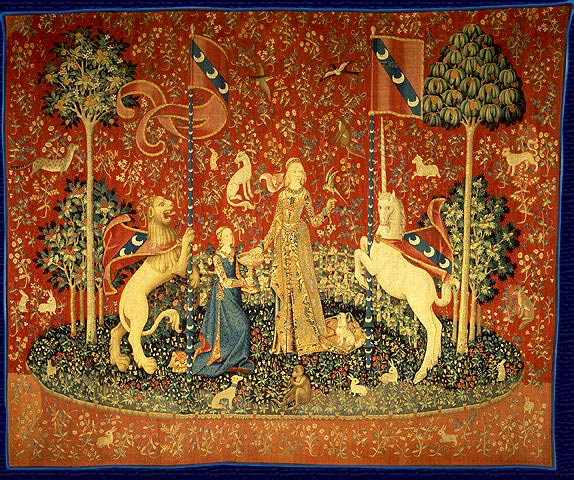
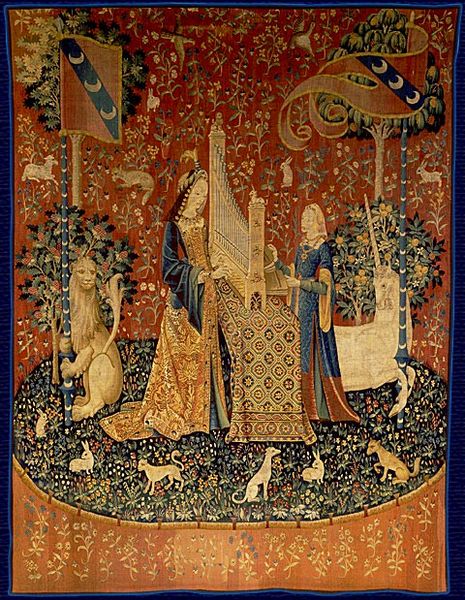
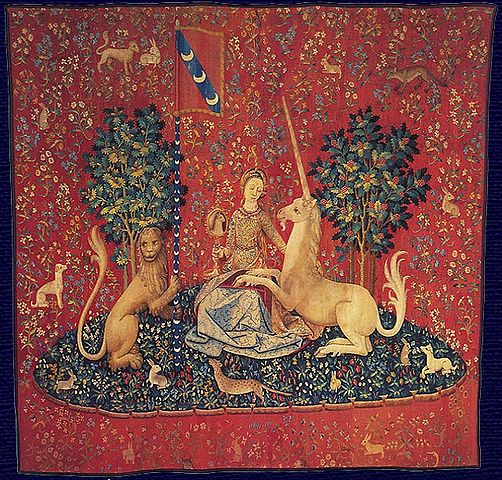
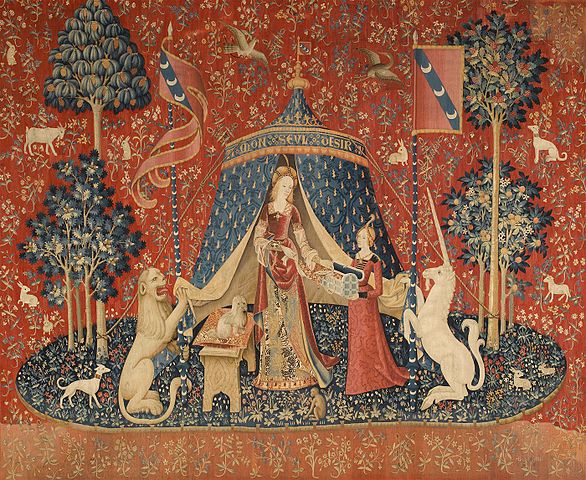

0 Comments